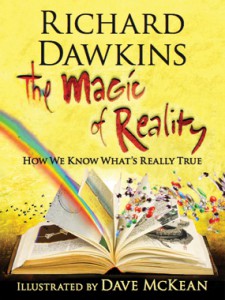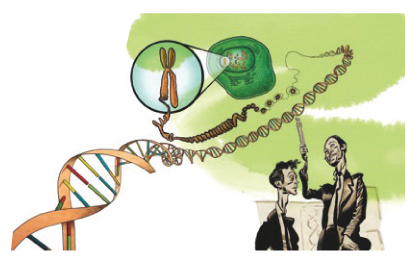The Magic of Reality: How We Know What’s Really True

Who was the first person really? Why are there so many different kinds of animals? What are things made of? Why do we have night and day, winter and summer? Why do bad things happen? These fundamental questions and so many more are answered in Richard Dawkins’ new book, The Magic of Reality: How We Know What’s Really True.
 All the things a child may inquire about, and all the things a parent, such as myself, may struggle to answer, are explained in vivid yet digestible sections in this book. Each chapter begins with a question, for example, “When and how did everything begin?” Dawkins first explores non-scientific, mythical answers to his questions because, he writes, “they are colorful and interesting, and real people have believed them. Some people still do.” He then proceeds to explain what and why things really are. Science, he proves, is truly magical, and he takes the young reader (and his or her parents) on a journey of amazing facts, magical myths, and memorable anecdotes.
All the things a child may inquire about, and all the things a parent, such as myself, may struggle to answer, are explained in vivid yet digestible sections in this book. Each chapter begins with a question, for example, “When and how did everything begin?” Dawkins first explores non-scientific, mythical answers to his questions because, he writes, “they are colorful and interesting, and real people have believed them. Some people still do.” He then proceeds to explain what and why things really are. Science, he proves, is truly magical, and he takes the young reader (and his or her parents) on a journey of amazing facts, magical myths, and memorable anecdotes.
But for all of its wondrous information and Dawkins’ engaging style, The Magic of Reality would not be complete without the extraordinary illustrations by award-winning artist Dave McKean. Together, Dawkins and McKean have created the best science book this homeschooling family has ever seen.
Fair warning: the book is dense and, depending on a child’s age, can be a bit overwhelming. So, how should one use a book such as this? After all, it’s hardly a bedtime story. In my home, where we share The Magic of Reality with a ten-year-old girl and an eight-year-old boy, reading a chapter has become a regular Sunday morning activity. We take turns reading and follow up with a discussion about each fact and story. We ask questions, the kids try to answer, and vice versa. Our children offer amazing insights, and we all learn something new each time.
Dawkins, author of numerous books, including The Selfish Gene, The God Delusion, and The Greatest Show on Earth, is the world’s most famous evolutionary biologist and atheist. He has spent his career educating adults about science and evolution, and has now successfully departed from that path to excite young people with the wonders of science.
“I hope you agree that the truth has a magic of its own,” Dawkins writes in the final sentence of the book. “The truth is more magical—in the best and most exciting sense of the word—than any myth or made-up mystery or miracle. Science has its own magic: the magic of reality.” I couldn’t agree more with this sentiment, and highly recommend The Magic of Reality to any parent eager to introduce the subject of science to their child.
